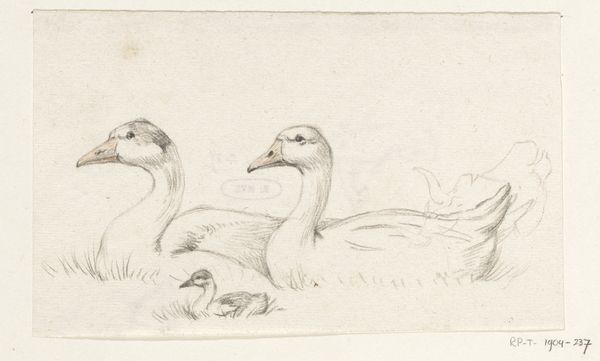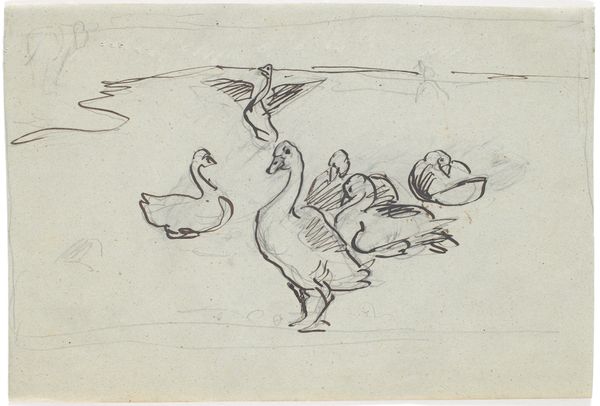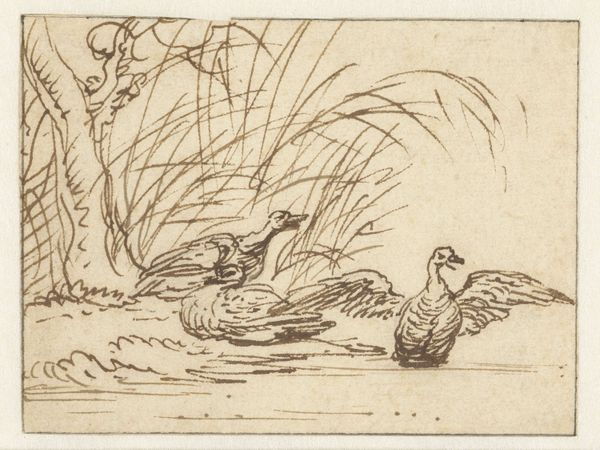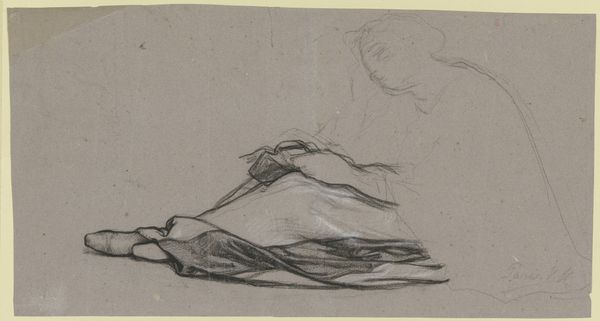
Dimensions: height 40 mm, width 80 mm
Copyright: Rijks Museum: Open Domain
Curator: This is “Twee eenden,” or “Two Ducks,” an ink drawing on paper by Johannes Tavenraat, created sometime between 1840 and 1880. You can currently find it here at the Rijksmuseum. Editor: Ah, my initial impression is that these ducks have a story. One's got its beak open, looking rather animated, and the other is all stately and still. What's the gossip, I wonder? Curator: I find myself drawn to the materiality of the piece. The type of paper used would have been commonplace and the drawing style suggests perhaps this was practice. How readily available and easily purchased were such materials, what options did he have and what decisions were made around it? This process gives great insight. Editor: Absolutely! And speaking of process, I love how quickly he seems to have captured them. There’s such an immediacy to the lines. It almost feels like a snapshot. Were they observed quickly? Or was the essence quickly recalled? Curator: Possibly. There's a debate around the drawing belonging to the style of Realism, an artistic movement of that time that began as a reaction to Romanticism. The focus became portraying real life without artificiality, escapism, or exaggeration and looking at this I'm compelled to question his reality versus mine! Editor: True, but those simple ink strokes also give them a kind of timeless quality, don't they? Like they could be any two ducks, anywhere, anywhen, floating in a pond and just quacking away. Curator: I think the appeal here is Tavenraat’s engagement with the working process, demonstrating the use of readily accessible materials for image making. I see this a lot, an economic necessity meets opportunity to experiment. Editor: You're right, that constraint becomes a space of creativity. Maybe I romanticize it too much. Still, I can’t help but imbue these simple sketches with some feeling. Curator: It reminds me that looking closely at even the most quotidian materials can offer really profound insights into art history. Editor: For me it is the idea of movement. What are the stories behind seemingly quiet and still works of art and can we extract any answers from within?
Comments
No comments
Be the first to comment and join the conversation on the ultimate creative platform.













